Single vs three phase systems – the basics
A single-phase system is the most common type of electrical system found in homes, as it is simple, easy to install, and sufficient for most homes.
Three-phase systems have three electricity inputs coming into the home and are typically used in commercial properties, or in larger residential properties with high energy demands like heavy machinery or other heavy duty appliances.
Does it matter what type of connection to the grid I have when choosing a solar system for my property?
In short – a single phase solar battery and inverter works without problems in a three-phase grid connected home so you don’t need to worry about forking out extra $$ for a three phase inverter/battery combo.
In a single-phase system, a solar panel and battery system is connected to the grid through a single-phase inverter, which converts the DC electricity produced by the solar panels or stored in your solar battery into electricity to power your home.
In a three-phase property, a solar panel and battery system can also be connected to the grid through either a single-phase or three-phase inverter. The difference is that in a three-phase home the inverter is responsible for balancing the power between the three phases, which is necessary to ensure that the heavier energy load is distributed evenly to your home, or back into the grid if you are on a VPP connected to the grid.
Does a single-phase battery work in off-grid operation?
Sure does. The difference is that the battery only supplies one phase during off-grid operation during a blackout. Because only one phase is supplied, any critical appliances need to be on that one phase to be able to draw power during the blackout. As long as your battery and inverter is installed with blackout protection your battery will keep supplying electricity to any essential /critical circuits in your home set up during the installation of your blackout protection. In addition the circuits you choose can easily be reconfigured at the meter board if you want to change the circuits to power during a blackout. This means that in the event of a power outage, energy is supplied via the battery or panels via your inverter to your home to keep electricity needs covered until the grid is up and running again.
Can a single phase solar battery system work for a three phase home?
The good news is that an on-grid single-phase inverter can still cancel out your bills in a three-phase home.
The reason why is something called net metering. A single-phase inverter and battery will only send electricity to one of your home’s three phases. But from your point of view, this is largely irrelevant. Because of net metering, you will still receive the full benefit of your solar power across all three phases regardless of whether you have a single-phase inverter or a three-phase inverter. This is because with net metering the power you import or export to/from the grid are recorded and calculated across phases as one value – they are not calculated separately. For example, if one phase was sending 5 kW back to the grid, and the other two phases are using -2 kW and -3 kW of power from the grid, then they would all cancel each other out at the meter and your ‘net energy usage’ would be zero kW.
Example of how ‘net metering’ works in a three phase home with solar
Let’s say that a single phase solar inverter is connected to the L1 Phase, and is making 4 kW of power in the middle of the day.
Your total house power usage at this time is 1 kW across each of the 3 phases of the home (L1-L3).
What happens here is the solar power supplies electricity to the L1 phase of the home (1kW) and then sends the rest of the solar electricity (3 kW) back to the grid.
This will be recorded by your electric meter as 3 kW of export back to the grid, and -2 kW of import from the grid on the L2 and L3 phases. Added together, 3kW of export and 2kW of import is a total of 1kW of export back to the grid for the solar feed in credit (3kW export – 2kW import = 1 kW feed-in).
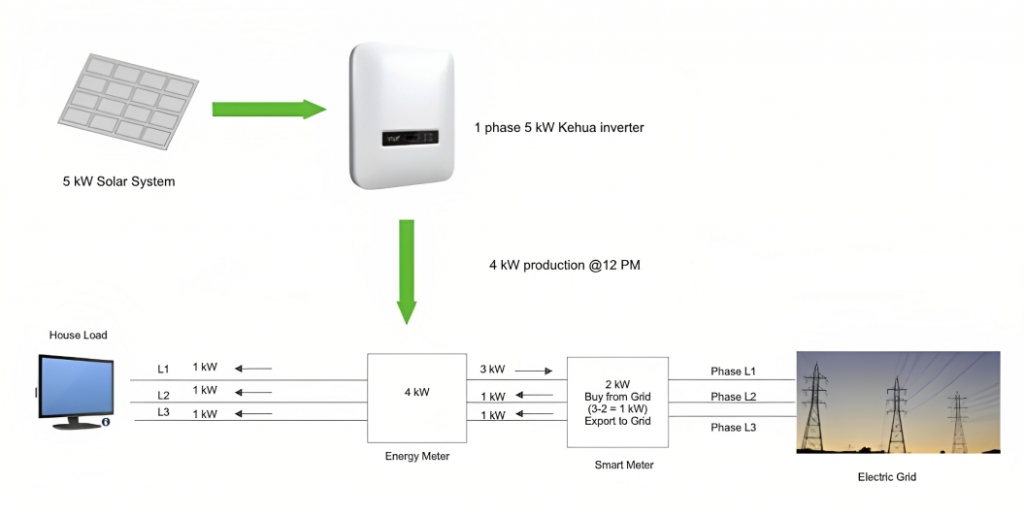
How to identify if your home is single phase or three phase?
There are a couple of ways to check whether you have single-phase or three-phases.
Your meter board
The easiest way to determine if your house is single-phase or three-phases is to start with your meter board. For a three-phase house the main circuit breaker switch will have bigger three-pole mains breaker joined together (one for each phase).

For a single-phase house there will be a single-pole main switch circuit breaker as you only have one single phase wire used to carry electricity to your home.
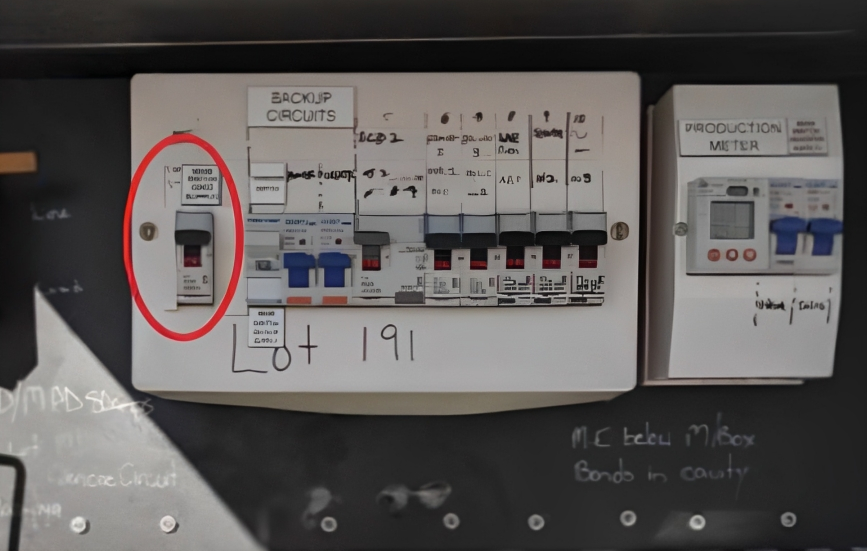
Number of Fuses or isolation links
Just like the main switch circuit breaker there will be fuses or isolation links present in your switchboard. The main purpose of these are to isolate your home in case the house meter needs to be upgraded to a smart meter. In most cases three-phase homes will have three fuses and one phase homes will have one.
However, there are exceptions to this rule where you could have multiple fuses, but only one or two is actually active. In this case the number of phases you have depends on the actual number of active/connected fuses. In addition, in South Australia, instead of fuses there are meter isolators installed inside the meter board.
Here’s where you can find the fuses we are talking about on your meter board:
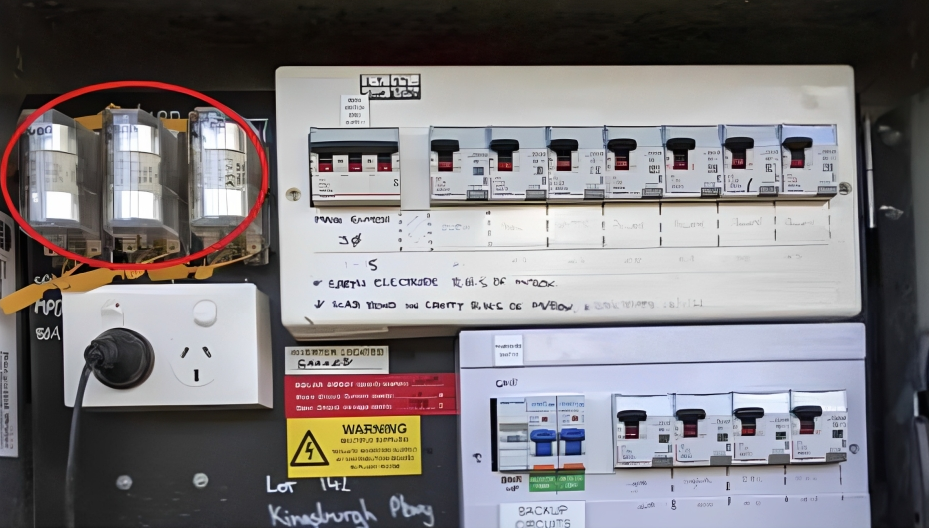
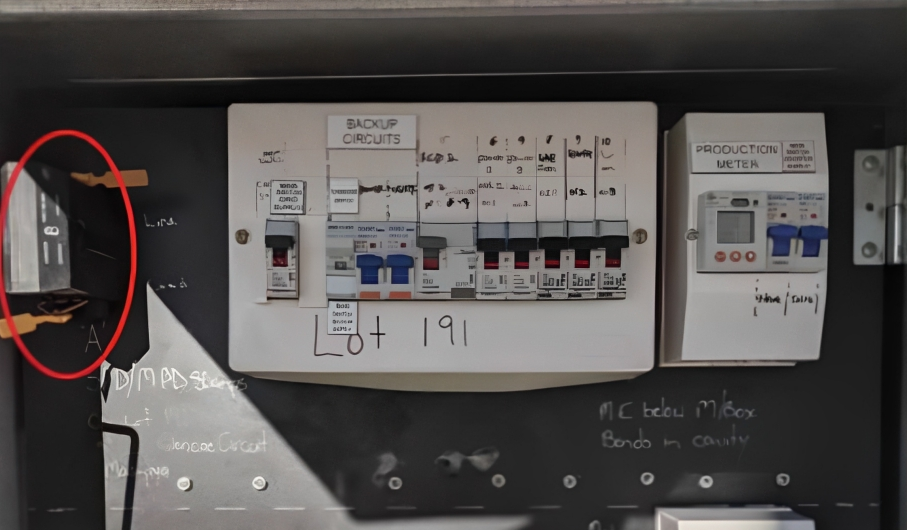
Electric meter type
There are different types of three-phase electric meters available. Generally speaking there is a low chance that if you have an electric meter on your house you’ll already have a three-phase meter. The easiest way to check whether your home is single-phase or three-phase is to inspect your meter display screen. If your house is three-phase you will notice L1, L2, L3 displayed on the screen which confirms that you are on a three-phase connection (picture 5). If you don’t see this you are on a single-phase connection (picture 6).
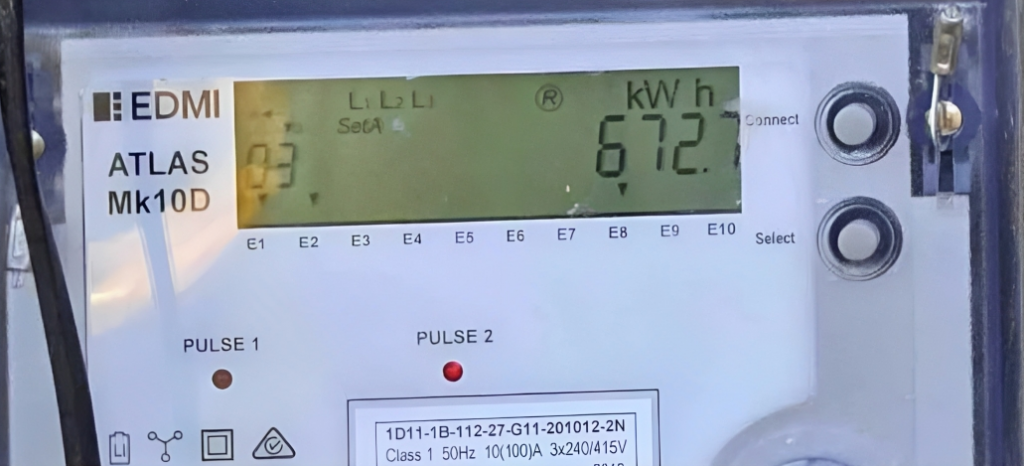
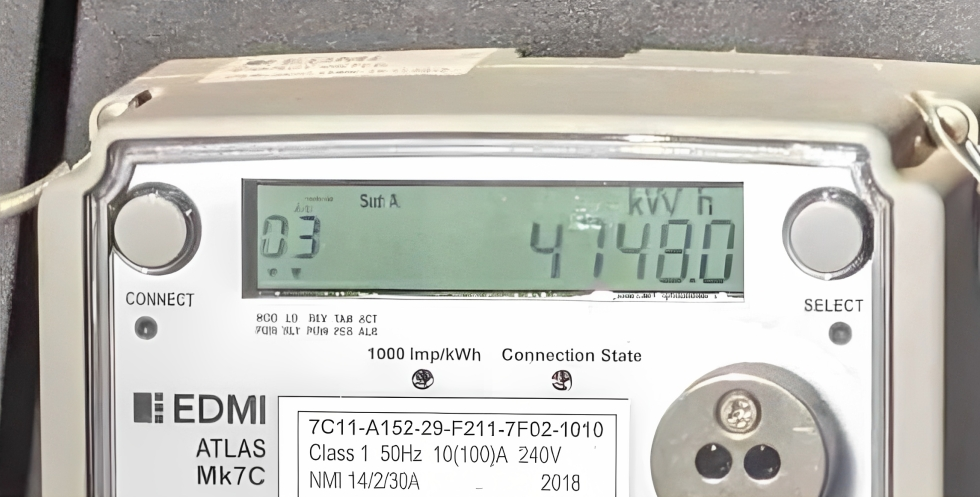
In conclusion
A single-phase battery/inverter will work with a three phase connection to the grid without any problems. The only time you may need a three phase battery is if you need to power all three phases during a blackout. This may be the case for commercial operations with heavy power demands, but is rarely needed for residential homes.
Single-phase solar systems are simple and easy to install and not as expensive as three-phase. They are generally more than enough for residential properties. This means that even if you have a three-phase connected home you only need to pay for a single-phase system.
The exception to the rule is that three-phase systems can handle a higher demand of electricity and are often used for commercial properties.
Ultimately the key thing to remember is that before you start your solar project, you need to be able to identify if your home is single-phase or three-phase. Your solar retailer and installer will then be able to recommend the right solution for your individual needs.

